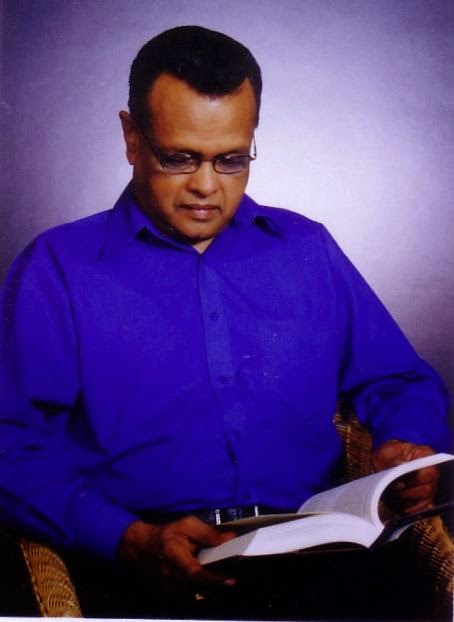Fiji
Elections: We need home-grown solution as Western media still jaundiced to Fiji
Thakur
Ranjit Singh
As Fiji approaches the historical 2014 election on 17 September,
2014, one thing is evidently clear: there has been no indigenous, i-Taukei
Fijian leader in Fiji’s history, who could ever win the hearts of the migrant
Indo-Fijian community in Fiji, as much as Bainimarama has done. Despite all the
venom of western media and his opponents, Vorege Bainimarama has been the most
visionary leader that a multi-racial and multi-ethnic Fiji has seen. Ratu Sir Lala
Sukuna, Ratu Sir Kamiseses Mara, Sitiveni Rabuka, Mahendra Chaudhry and
Laisenia Qarase have been left behind in the scrapheap of history, as Bainimarama
looks for a home grown solution in a multi-racial fledgling democracy, plagued
with ethno-nationalism and divisive politics.
He may not be perfect-but he is the best Fiji has seen so far. And
in the process, expect some collateral damage, as any history-in-making
produces.
Every man and his dog, with their Western concept of
failed democracy in Fiji had painted Frank Bainimarama as a villain and a
selfish, self-centred man. The latest one is Nick Naidu, who represents an
almost defunct organisation, the Coalition for Democracy in Fiji in Auckland.
Naidu’s claims on TV 3 interview on 15 September 2014
substantiates the reason why Frank Bainimarama is sceptical and suspicious of a
free press in general and Western concept of press freedom in developing Fiji,
in particular.
Naidu claims that Bainimarama is a person who only
thinks of himself and nobody else. If Naidu and TV 3 had bothered to read that
morning’s NZ Herald’’s article by its ethnic reporter, Lincoln Tan, they
may think twice about airing such blinkered and jaundiced interview.
According
to Tan, Nadi (Fiji) taxi driver Vinod Kumar said he "cannot wait" to
have his say on who will form the next Fijian government.
The
55-year-old grandfather, whose son Shanil lives and works in Auckland, is
"90 per cent sure" he will be voting for Frank Bainimarama and his
Fiji First Party when the polls open on Wednesday.
"The
West just don't understand, they think just because we had a military coup that
makes Frank a bad person," Mr Kumar said.
"But
life for us ordinary folks has improved so much under him. The roads no longer
have potholes, crime is down and more children are going to school because
schooling is now free."
He
said small things, such as free school buses for students, go a long way
because most in Fiji were "generally quite poor".
Mr
Kumar said many Fijians were excited at the prospect of voting and election
rallies were attracting crowds of thousands.
That shows the diametrically inconsistent White mainstream
media in New Zealand which is still somewhat jaundiced and unsure on Fiji
issues. My journalism studies at Auckland University of Technology (AUT) in
2009 and 2010 revealed in my research papers that some of NZ media, who hardly
employ ethnic reporters, were very opposed to happenings in Fiji just because
Fiji had kicked away an unsuitable concept of Western Democracy, has kicked out
some NZ reporters and did not at all miss the step-brotherly treatment given by
NZ and Australia. Fiji marched along oblivion of Ostrich syndrome and snub by
these neighbours. Fiji got other friends and ignored these two countries which
now appear to be mending the bridges they burnt.
TV 3 failed to ask and Naidu failed to volunteer the
information that democracy has become a dirty word in Fiji, especially among
the Indo-Fijians who were starkly mistreated by previous ethno-nationalist and
blatantly racist governments, masquerading as a democracy. NZ and Australia, as supposedly civilised
First World neighbours failed to keep a tab on the wrongdoings of Qarase regime
which virtually had rendered Indo-Fijians to a third-class status. It was only
the blessings of 2006 takeover of Qarase regime that gave back Fiji some hope.
If today I could call myself a Fijian and enjoy dual citizenship
of NZ and Fiji, and still have that dignity as a Fiji citizen, it is because of
the same Frank Bainimarama that the Western World takes all opportunity to
project as some villain, because he rejected western imported failed system against
a home-grown solution. What Fiji needed was an understanding of the world and a
local solution to its fundamental problems. Fiji cannot be blamed for
befriending China, Russia, Cuba and Korea when its neighbours, founded on bible
and Christianity never showed much love for their neighbour.
So many good things have taken place in Fiji, and
consequently the credibility, authenticity and mandate of Coalition for
Democracy comes into question for not knowing their Fiji. The leaders of other
parties’ visited Auckland, nobody heard or saw. When Bainimarama visited
Auckland on 9 August, 2014 at Vodafone Event Centre the place was overcrowded
with people and Frank Bainimarama was mobbed like a Bollywood star. The
blinkered Mainstream media in Auckland were blind to some 2,000 supporters but
only saw a handful of protesters.
So many people know what perhaps Nick Naidu and TV 3 need to know
about this popular Fijian leader. Frank Bainimarama rescued Fiji from chasm of
racism and divisive politics, camouflaged as democracy. Fiji needs a home-grown
solution, no more of imported failed western concepts. The elections in 2014 is
a step in that direction. And when history is in making, as was USA’s 200 years
ago, we are bound to have some collateral damage.
E-mail: thakurji@xtra.co.nz
[About the Author: Thakur Ranjit Singh is a post
graduate scholar in honours in Communication Studies from Auckland University
of Technology. From a system which could give him a relevant job, he has started
his blog sites, FIJI PUNDIT (www.fijipundit.blogspot.co.nz)
and KIWI PUNDIT (www.kiwipundit.blogspot.co.nz)
and publishes what the other media does not tell]
.jpg)




















